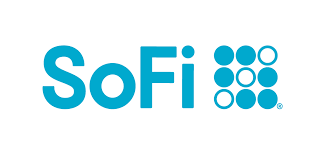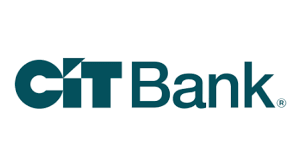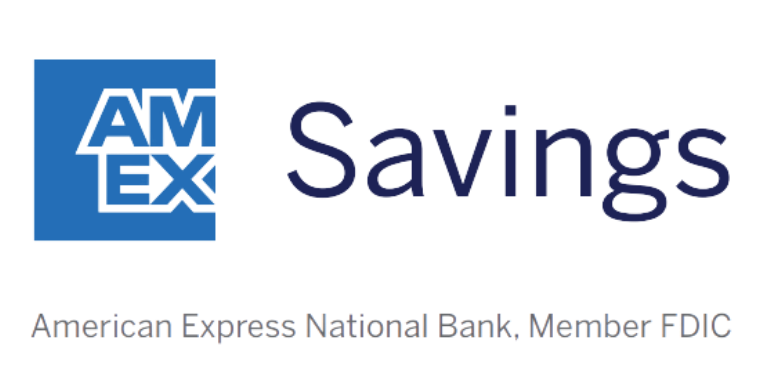Your credit score is a crucial part of your finances. It affects which credit cards you qualify for, the interest rate you pay on loans, whether you qualify for an apartment, and much more. Because of that, it's important to keep track of your credit score and work on improving it as much as possible.
The question people often ask is how they can stay on top of their credit score. Many sites claim to help you check your credit, and some of them charge a fee. With so many options, it can feel overwhelming.
The good news is that it's not as difficult as it seems. Here's what you need to know about credit scores -- and how to look up yours free of charge.
Understanding the different types of credit scores
The term "credit score" is a bit misleading, because there are actually dozens of different credit scores out there. There are two systems used to calculate consumer credit scores:
- FICO® Score (the most widely used by lenders)
- VantageScore
Both of these systems have multiple versions with different scoring calculations. In addition, there are three credit bureaus that each calculate credit scores based on the credit report it has for you:
- Equifax
- Experian
- TransUnion
It's certainly complicated, but keep this in mind -- you don't need to know all your credit scores. One is enough.
The key is to check the right type of score. Since most lenders use your FICO® Score, that's the score you should check.
Compare savings rates
Make sure you're getting the best account for you by comparing savings rates and promotions. Here are some of our favorite high-yield savings accounts to consider.
| Account | APY | Promotion | Next Steps |
|---|---|---|---|

Open Account for SoFi Checking and Savings
On SoFi's Secure Website.
Rating image, 4.50 out of 5 stars.
4.50/5
Our ratings are based on a 5 star scale.
5 stars equals Best.
4 stars equals Excellent.
3 stars equals Good.
2 stars equals Fair.
1 star equals Poor.
We want your money to work harder for you. Which is why our ratings are biased toward offers that deliver versatility while cutting out-of-pocket costs.
|
up to 3.80%²
Rate info
You can earn the maximum APY by having Direct Deposit (no minimum amount required) or by making $5,000 or more in Qualifying Deposits every 30 days. See SoFi Checking and Savings rate sheet at: https://www.sofi.com/legal/banking-rate-sheet.
Min. to earn: $0
|
New customers can earn up to a $300 bonus with qualifying direct deposits!¹
|
Open Account for SoFi Checking and Savings
On SoFi's Secure Website. |

Open Account for CIT Platinum Savings
On CIT's Secure Website.
Rating image, 4.50 out of 5 stars.
4.50/5
Our ratings are based on a 5 star scale.
5 stars equals Best.
4 stars equals Excellent.
3 stars equals Good.
2 stars equals Fair.
1 star equals Poor.
We want your money to work harder for you. Which is why our ratings are biased toward offers that deliver versatility while cutting out-of-pocket costs.
|
4.10% APY for balances of $5,000 or more
Rate info
4.10% APY for balances of $5,000 or more; otherwise, 0.25% APY
Min. to earn: $100 to open account, $5,000+ for max APY
|
Earn a bonus of at least $225 after a one-time deposit of $25,000+.
Transfer a one-time deposit of $25,000-$49,999.99 for a bonus of $225. Transfer a one-time deposit of $50,000+ for a bonus of $300. Account must be opened with code PS2025 while this promotion lasts, and funded within 30 days. Bonus will be fulfilled within 60 days from the funding date. There is no period of time where the customer will be required to maintain the funds. Account must be open when bonus is credited. One bonus per account and primary customer. Bonus will be credited into the Platinum Savings Account that fulfills the funding requirement. Funding can be deposited all at once or incrementally.
|
Open Account for CIT Platinum Savings
On CIT's Secure Website. |

Open Account for American Express® High Yield Savings
On American Express's Secure Website.
Rating image, 4.00 out of 5 stars.
4.00/5
Our ratings are based on a 5 star scale.
5 stars equals Best.
4 stars equals Excellent.
3 stars equals Good.
2 stars equals Fair.
1 star equals Poor.
We want your money to work harder for you. Which is why our ratings are biased toward offers that deliver versatility while cutting out-of-pocket costs.
|
3.70%
Rate info
3.70% annual percentage yield as of April 16, 2025. Terms apply.
Min. to earn: $0
|
N/A
|
Open Account for American Express® High Yield Savings
On American Express's Secure Website. |
SoFi disclosure:
¹ New and existing Checking and Savings members who have not previously enrolled in Direct Deposit with SoFi are eligible to earn a cash bonus of either $50 (with at least $1,000 total Direct Deposits received during the Direct Deposit Bonus Period) OR $300 (with at least $5,000 total Direct Deposits received during the Direct Deposit Bonus Period). Cash bonus will be based on the total amount of Direct Deposit. Direct Deposit Promotion begins on 12/7/2023 and will be available through 1/31/26. See full bonus and annual percentage yield (APY) terms at sofi.com/banking#1.
² SoFi members who enroll in SoFi Plus with Direct Deposit or by paying the SoFi Plus Subscription Fee every 30 days or with $5,000 or more in Qualifying Deposits during the 30-Day Evaluation Period can earn 3.80% annual percentage yield (APY) on savings balances (including Vaults) and 0.50% APY on checking balances. There is no minimum Direct Deposit amount required to qualify for the stated interest rate. Members without either SoFi Plus or Qualifying Deposits, during the 30-Day Evaluation Period will earn 1.00% APY on savings balances (including Vaults) and 0.50% APY on checking balances. Only SoFi Plus members are eligible for other SoFi Plus benefits. Interest rates are variable and subject to change at any time. These rates are current as of 1/24/25. There is no minimum balance requirement. Additional information can be found at http://www.sofi.com/legal/banking-rate-sheet. See the SoFi Plus Terms and Conditions at https://www.sofi.com/terms-of-use/#plus.
³ We do not charge any account, service or maintenance fees for SoFi Checking and Savings. We do charge a transaction fee to process each outgoing wire transfer. SoFi does not charge a fee for incoming wire transfers, however the sending bank may charge a fee. Our fee policy is subject to change at any time. See the SoFi Checking & Savings Fee Sheet for details at sofi.com/legal/banking-fees/.
⁴ SoFi Bank is a member FDIC and does not provide more than $250,000 of FDIC insurance per depositor per legal category of account ownership, as described in the FDIC’s regulations.
Any additional FDIC insurance is provided by the SoFi Insured Deposit Program. Deposits may be insured up to $3M through participation in the program. See full terms at SoFi.com/banking/fdic/sidpterms. See list of participating banks at SoFi.com/banking/fdic/participatingbanks.
⁵ We’ve partnered with Allpoint to provide you with ATM access at any of the 55,000+ ATMs within the Allpoint network. You will not be charged a fee when using an in-network ATM, however, third-party fees incurred when using out-of-network ATMs are not subject to reimbursement. SoFi’s ATM policies are subject to change at our discretion at any time.
⁶ Early access to direct deposit funds is based on the timing in which we receive notice of impending payment from the Federal Reserve, which is typically up to two days before the scheduled payment date, but may vary.
⁷ Overdraft Coverage is limited to $50 on debit card purchases only and is an account benefit available to customers with direct deposits of $1,000 or more during the current 30-day Evaluation Period as determined by SoFi Bank, N.A. The 30-Day Evaluation Period refers to the “Start Date” and “End Date” set forth on the APY Details page of your account, which comprises a period of 30 calendar days (the“30-Day Evaluation Period”). You can access the APY Details page at any time by logging into your SoFi account on the SoFi mobile app or SoFi website and selecting either (i) Banking > Savings > Current APY or (ii) Banking > Checking > Current APY. Members with a prior history of non-repayment of negative balances are ineligible for Overdraft Coverage.
How to find out your credit score
Now, let's look at how to check your credit.
1. Pick a free credit score service
There are quite a few free credit score tools. If you have any credit cards, there's a good chance the card issuer offers a tool you can use.
Remember though that we're not just looking for any score. We're looking for your FICO® Score. Many services provide your VantageScore, which isn't used as often and can be much different.
Here are two services that provide your FICO® Score 8 (the specific type of FICO® Score most widely used today):
Both services require you to sign up, but they're free to use. You don't need to have any Discover credit cards to use its credit score service.
2. Sign up for an account
After you've chosen a service, go through the sign-up process. Here's the information these services typically ask for:
- Full name
- Address
- Email address
- Date of birth
- Social Security number
You'll also need to set up a password and verify your email address.
3. Log in and view your credit score
Once you have an account, you can log in and find your credit score. Most services update monthly so you can always keep up with your current score.
These services typically provide information on which factors are positively and negatively affecting your credit. Spend some time reviewing this information to see what you can do to increase your credit score.
Note that you need to have a credit account open and reported on your credit file for at least six months before you'll have a FICO® Score. If you don't have a credit score yet, check out starter credit cards to begin building your credit history.
Monitoring your credit
Your FICO® Score will give you an accurate idea of how good your credit is. There are a couple other things you can do to stay on top of your credit.
First, check your credit score every month. That way, you can see if it's progressing and if there are any potential issues.
Make sure you also review your credit reports from the three credit bureaus (Equifax, Experian, and TransUnion). These reports show all the information each bureau has on you, and it's important to review them for errors.
You're legally entitled to one free credit report per year from each bureau. However, all three bureaus are currently offering free weekly credit reports through April of 2022.
By keeping track of your FICO® Score and watching your credit reports, you'll be fully informed on a key part of your financial health.
We're firm believers in the Golden Rule, which is why editorial opinions are ours alone and have not been previously reviewed, approved, or endorsed by included advertisers. Motley Fool Money does not cover all offers on the market. Motley Fool Money is 100% owned and operated by The Motley Fool. Our knowledgeable team of personal finance editors and analysts are employed by The Motley Fool and held to the same set of publishing standards and editorial integrity while maintaining professional separation from the analysts and editors on other Motley Fool brands. Terms may apply to offers listed on this page.